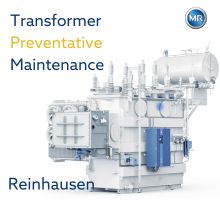Honda Develops New Technology to Join Steel and Aluminum
02/25/2013 - Honda Motor Co. announced the development of a new technology to join steel and aluminum and further applied this technology to the mass production of vehicles, initially to the North American version of the all-new Acura RLX but plans to expand its application to other models.
Honda Motor Co., Ltd. has announced the development of a new technology to join steel and aluminum and plans to further apply this technology to the mass production of vehicles, initially to the North American version of the all-new Acura RLX and to then expand its application to other models.
The first application of this technology was with a new aluminum outer door panel, which has conventionally been made of steel, to join it to the steel inner door panel.
To join together the dissimilar metals of steel and aluminum, the simultaneous establishment of several different technologies was required, including technologies to prevent corrosion (electrical corrosion) and thermal deformation caused by the different expansion rates of steel and aluminum.
Honda newly developed three technologies that enabled adoption of aluminum for the outer door panel:
1) Technology to join dissimilar materials: adoption of '3D Lock Seam' (3DLS) structure, where the steel panel and aluminum panel are layered and hemmed together twice
2) Technology to prevent electrical corrosion: adoption of highly anti-corrosive steel for the inner panel and a new form that assures the complete filling of the gap with adhesive agent
3) Technology to control thermal deformation: adoption of an adhesive agent with low elastic modulus (better ability to 'stretch') and optimized position of the 3D Lock Seam
The advantages of these new technologies include elimination of a spot welding process required to join conventional steel door panels. Moreover, these technologies do not require a dedicated process; as a result, existing production lines can accommodate these new technologies.
In everyday use, the new technology contributes to the improvement of fuel economy and dynamic performance of the vehicle by reducing door panel weight by approximately 17% compared to the conventional all-steel door panel. In addition, weight reduction at the outer side of the vehicle body concentrates the point of gravity further toward the center of the vehicle, contributing to improved stability in vehicle maneuvering.
Going forward, Honda will continue its proactive research and development of leading technologies in order to further enhance the performance and environmental credentials of its products and manufacturing processes, as well as develop innovations to enable society practical ways to enjoy the convenience, independence and fun that come from the freedom of movement.



-(220-x-200-px)-(130-x-130-px)-(220-x-200-px).jpg?lang=en-US&ext=.jpg)
.gif?width=200&height=200&mediaprotectionhash=ddb07947ad3b4ab959a83714461eccd5c6895f370695eb035a9ff7aa736f8ad9&ext=.gif)





